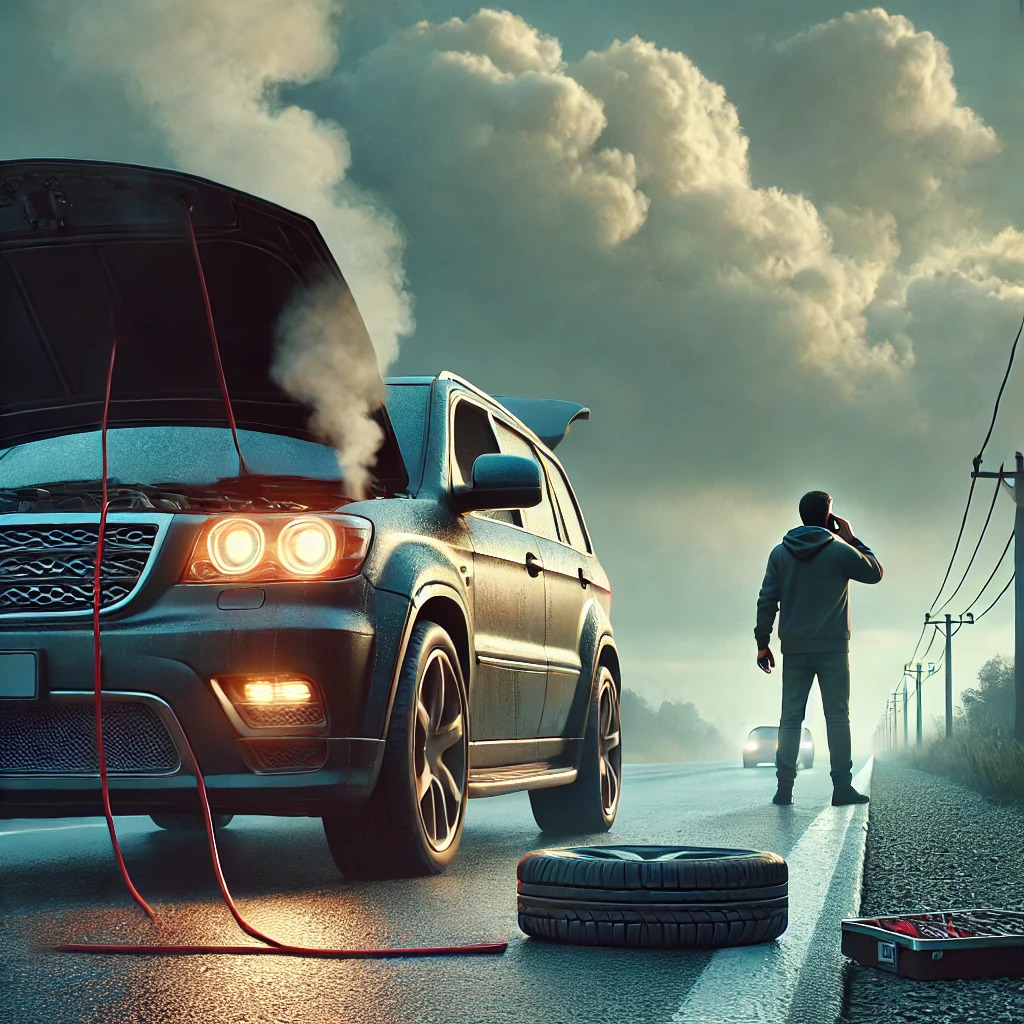As a car owner, nothing is more frustrating than an unexpected breakdown. Not only can it ruin your day, but it could also put you in dangerous situations. The good news is that most breakdowns don’t happen without warning. Your vehicle often gives subtle signals before major issues occur, and recognising these can save you both time and money. Let’s explore some common warning signs that your car may be heading for trouble and what you can do about them.
1. Visual Indicators: Spotting the First Signs
Cars tend to give off visual clues that something might be wrong. Some of the most common ones include:
- Fluid Leaks: If you see puddles or stains under your parked car, it’s a red flag. Green or blue liquids often signal a coolant leak, while dark brown patches can indicate oil leaks. Ignoring these could lead to overheating or engine damage.
- Steam or Smoke from the Engine: If you notice steam coming from under the bonnet, it could indicate the car is overheating, which demands immediate attention to avoid severe engine damage.
- Worn Belts and Hoses: Cracks, bulges, or frayed belts are signs that components are on the verge of failure. These parts are critical for keeping your engine’s systems running smoothly.
By regularly inspecting your car for these visual signs, you can often catch issues early before they result in a breakdown.
2. Unusual Noises: What to Listen For
Strange sounds coming from your car are another major indicator that something is wrong:
- Squealing or Grinding Brakes: These noises often indicate worn brake pads or rotors. Addressing this issue early can save you from more expensive repairs and ensure your safety on the road.
- Knocking or Tapping from the Engine: A persistent knocking sound from under the bonnet could signal a problem with the engine’s internals. It could be due to poor lubrication or even worn-out engine components.
- Loud Exhaust: An unusually noisy exhaust could mean there’s a hole in your exhaust pipe, or your muffler is malfunctioning. This not only affects your car’s performance but could also lead to a fine for excessive noise.
Listening closely to your car’s sounds can often tell you when it’s time to head to the mechanic, preventing bigger issues later on.
3. Changes in Performance
Is your car driving differently than usual? Performance issues are often early indicators of underlying problems:
- Decreased Fuel Efficiency: If you notice your fuel consumption has increased without any obvious reason, it could be a sign of an issue with the fuel system, such as a clogged filter or dirty injectors.
- Difficulty Starting the Engine: Struggling to start your car or having to crank the engine multiple times could point to a battery issue, a faulty alternator, or problems with the ignition system.
- Rough Idling or Stalling: If your car is idling roughly or stalling when you stop, there may be an issue with the fuel delivery system, such as the fuel pump or injectors.
Addressing these issues early can help you avoid an unexpected breakdown on the road.
4. Dashboard Warning Lights: Your Car’s Cry for Help
Modern vehicles are equipped with a sophisticated warning system designed to alert you to problems before they escalate:
- Check Engine Light: This light can indicate a wide range of issues, from a loose fuel cap to a major engine malfunction. Ignoring this could lead to severe problems, so it’s always best to have it checked by a mechanic.
- Battery and Alternator Lights: If either of these lights comes on, it signals a problem with the car’s electrical system, which could leave you stranded with a dead battery if not addressed.
- Temperature Gauge in the Red Zone: This is a clear sign your engine is overheating. Continuing to drive with an overheating engine can cause irreversible damage.
Taking dashboard warnings seriously is crucial for preventing bigger issues down the line.
5. Feeling Something Off: Physical Sensations While Driving
Sometimes you can feel when your car is not working as it should. These physical changes include:
- Steering Wheel Shimmy: If your steering wheel starts to vibrate or shake, it may indicate a tyre or wheel alignment issue. This can affect your control over the vehicle, especially at high speeds.
- Brake Pedal Pulsation: A pulsating brake pedal could signal warped brake rotors, which can affect your braking efficiency and safety.
- Excessive Exhaust Smoke: If your car is blowing blue or white smoke, it could indicate oil leaks or coolant entering the combustion chamber, both of which need immediate attention.
These sensations could suggest serious mechanical issues that, if ignored, may lead to a breakdown.
6. Regular Maintenance: Your Best Defence
While being aware of the warning signs is essential, the best way to prevent breakdowns is regular vehicle maintenance. Regular oil changes, tyre rotations, and fluid top-ups can significantly extend your car’s lifespan. Scheduling periodic check-ups with a certified mechanic can catch problems before they develop into serious issues.
At Windmill Garage, our expert technicians are ready to help keep your car in top shape, ensuring your safety and peace of mind. If you notice any of these warning signs, don’t wait for the problem to worsen — get your vehicle checked by a professional. Regular inspections and prompt repairs can save you from costly repairs and breakdowns in the future.
Final Thoughts
Spotting the warning signs before your car breaks down is key to avoiding major repairs and dangerous roadside emergencies. From unusual noises and dashboard warnings to visual clues and performance changes, staying alert to these red flags can keep you safe on the road. And when in doubt, trust the experts at Windmill Garage to provide reliable, high-quality maintenance to prevent unexpected breakdowns.
Make sure to schedule regular inspections and address any issues as soon as they arise to ensure your vehicle stays in peak condition.

